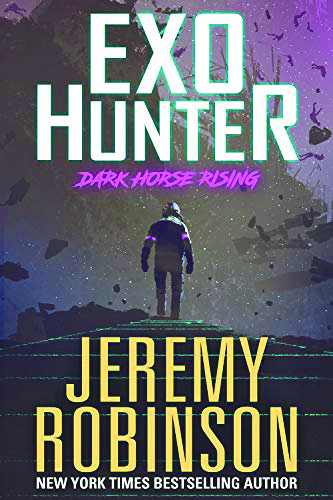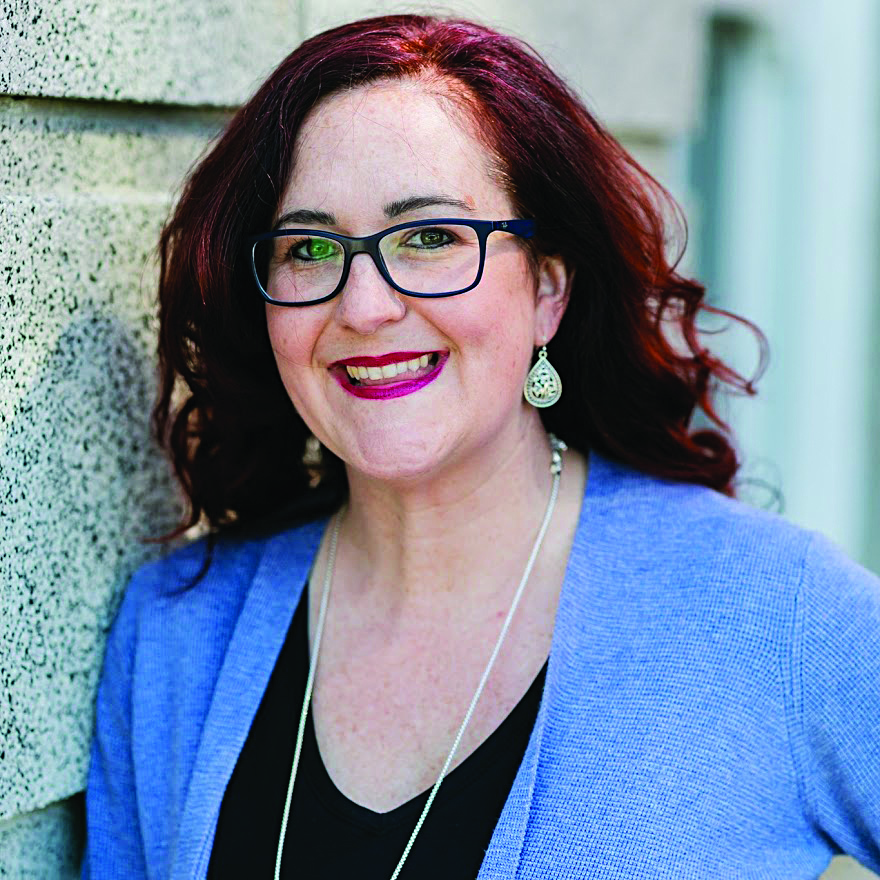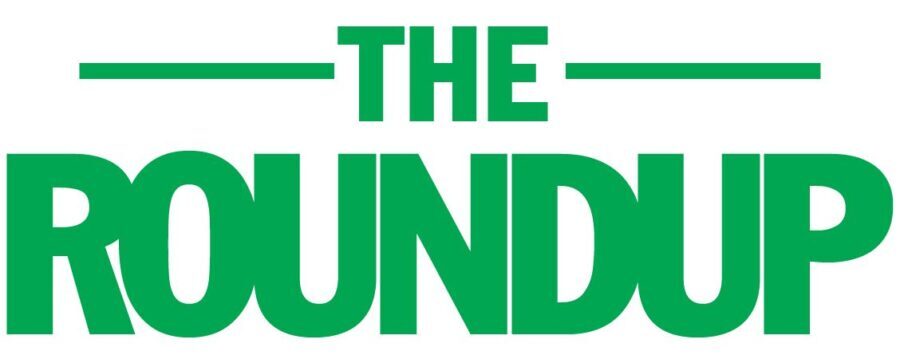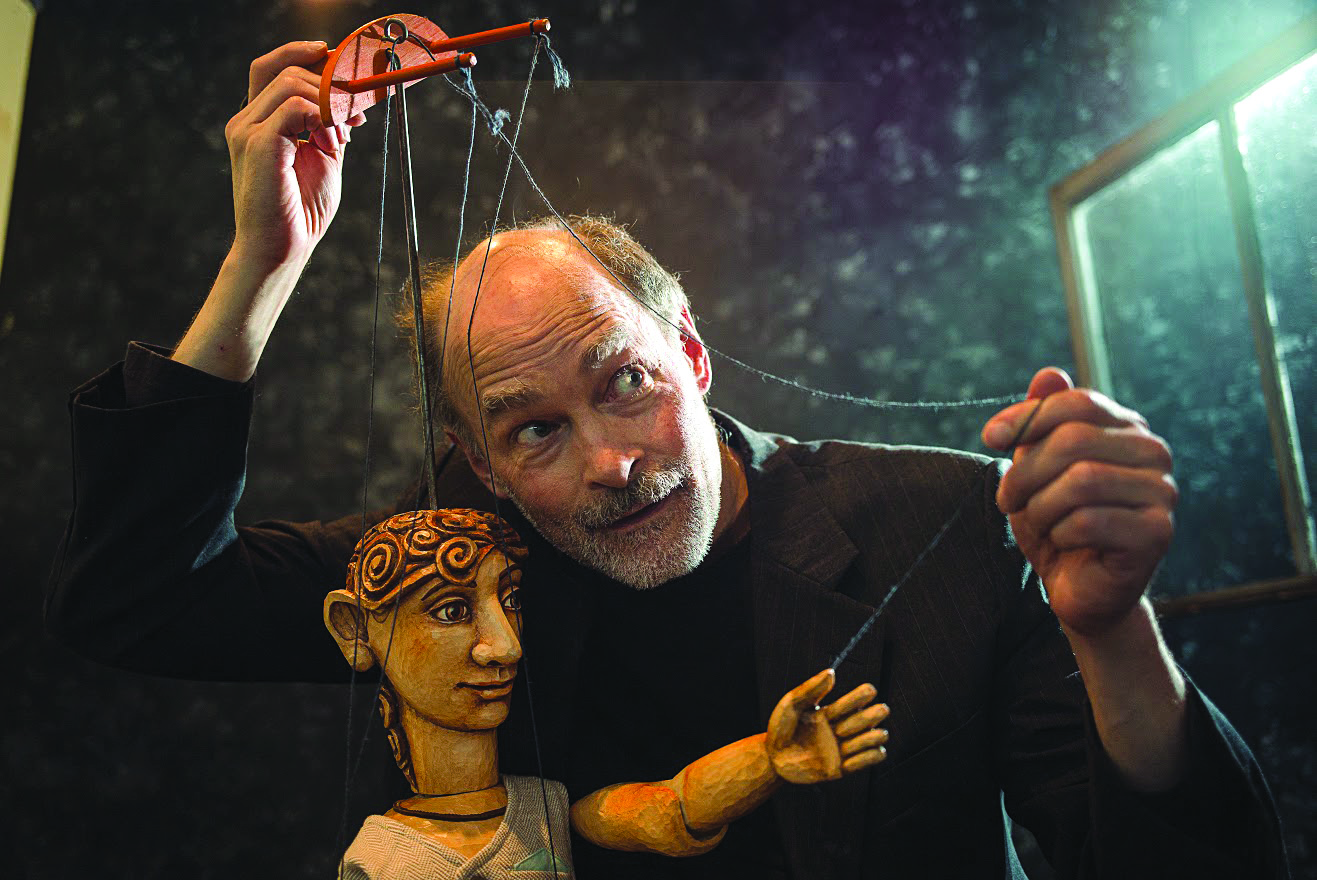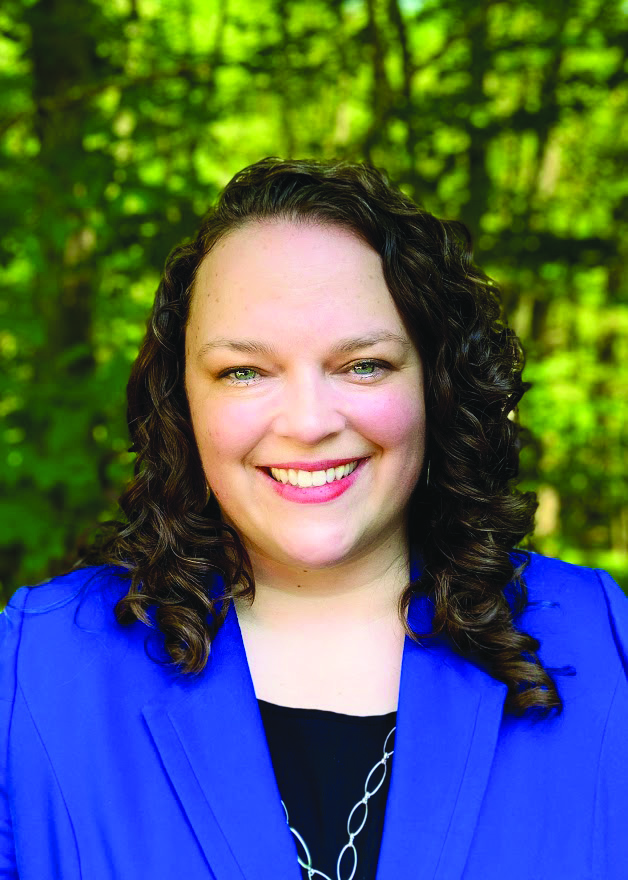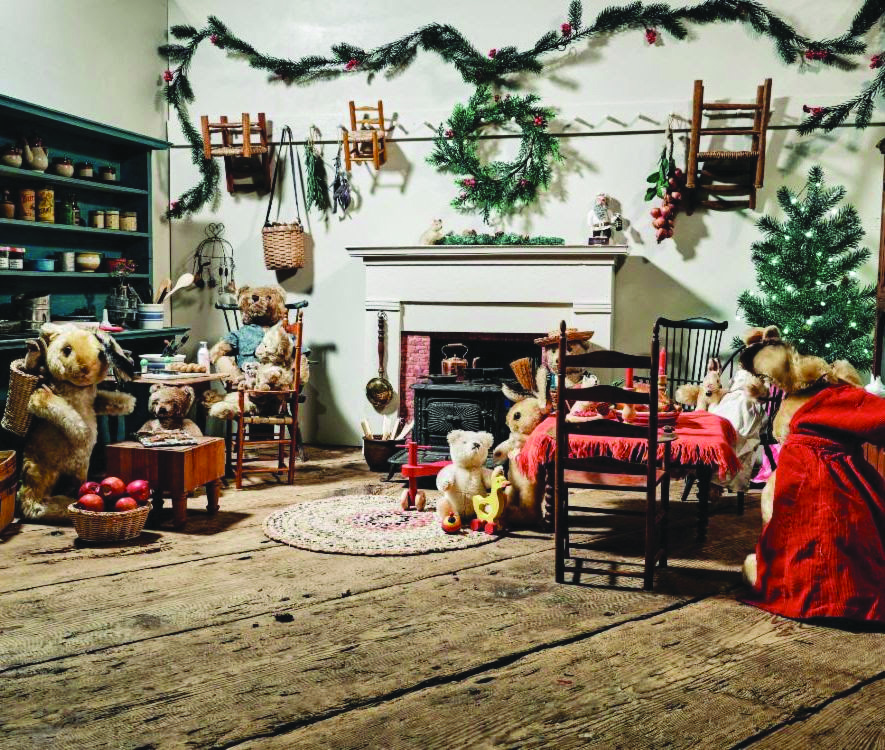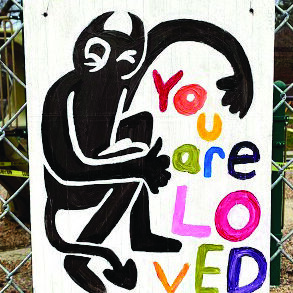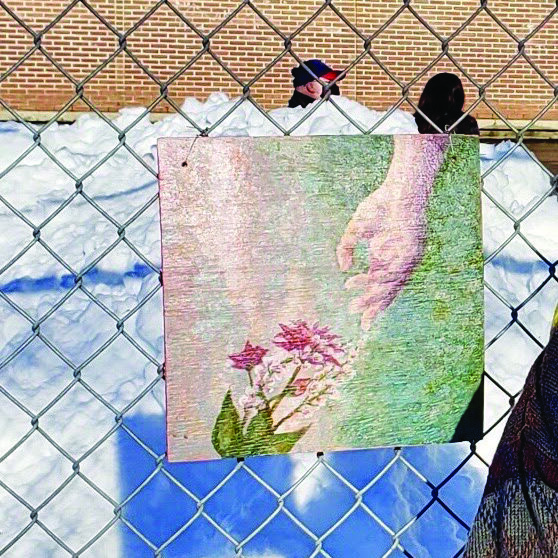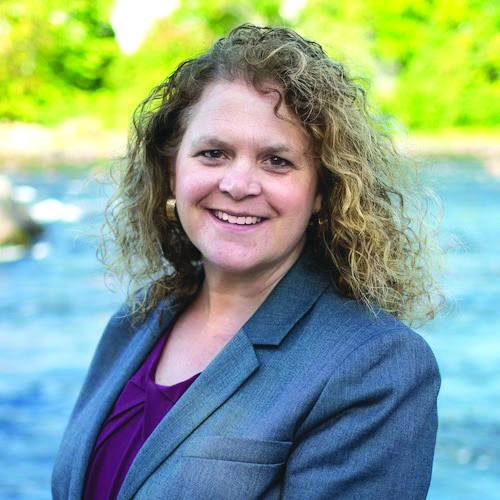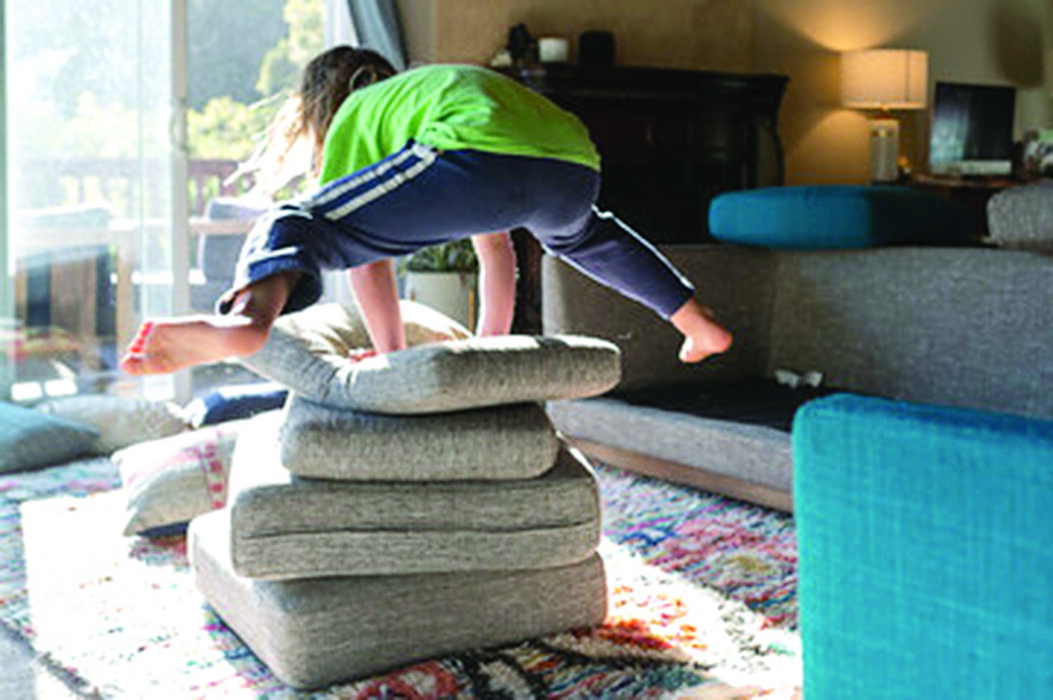7 IDEAS FOR PROJECTS TO LIVEN UP YOUR WINTER
Between Covid, snowstorms and shorter days, we’ll all likely be spending a lot of time at home over the next several months. Here are seven ideas for projects, from the giftable truffles to the ongoing satisfaction of indoor greenery, that can add some fun to your winter.
Build a Rube Goldberg machine
Kids, adults and families can stimulate their creativity and STEM skills this winter by building a Rube Goldberg machine, a contraption made from household items that uses a series of interconnected steps to perform a simple task.
Zach Umperovitch of Bedford is a contracted Rube Goldberg machine builder for Rube Goldberg Inc. and Synn Labs and a two-time Guinness World Record-setter for the longest Rube Goldberg Machine. He said that, traditionally, the machine’s final task is something mundane, and the fun lies in the irony of making the process “incredibly complicated.”
“Say you want to water a plant,” he said. “You might blow up a balloon, and that balloon hits a seesaw, which causes a [toy] car to roll down and trigger something else, and all those steps link together in order to water the plant.”
Once you’ve decided what your machine’s final task will be, start looking around for materials and thinking about how they could work together.
“Rube Goldberg is all about repurposing everyday objects and using them in a new, creative way,” Umperovitch said. “You’re using resources in your own home, so you don’t even need to leave the house.”
Dominoes or objects that could act as dominoes, such as books or DVD cases, and objects that roll, like balls or marbles, are good ones to start with, he said. Kitchen utensils work well as catapults.
Six to 10 steps is appropriate for a beginner, Umperovitch said, and it’s easiest to start with the last step — the one that will directly trigger your goal task — and work backward.
You may prefer to plan out all of the steps before you start building, or you may prefer to start building and let inspiration come to you along the way; both styles are valid, Umperovitch said, but if you’re a pre-planner, you’ll need to be flexible.
“When I try to build a fully designed machine, I would say between 70 and 90 percent of it gets changed from the initial design to the final product, and this is my profession,” he said.
Finally, while not as exciting as building, testing your machine is one of the most important parts of the process and will probably be the most time-consuming. That said, Umperovitch said, make sure the steps in your machine are made with stable or infinite resources and are relatively easy to reset.
“I have a rule: 50 out of 50 [successful attempts],” he said. “You want to be able to test every step, individually, over and over, because if one step fails one time, what’s to say it won’t happen again when you’re trying to run the entire machine?”
Set up an at-home obstacle course
Start your ninja training this winter by building your own obstacle course using the layout of your home and common household items.
Tabitha Stevens, youth coach and lesson planner for Ninja Fit Club, an obstacle-based fitness center in Londonderry, shared some ideas to get you started. The exercises themselves are mostly aimed at kids, she said, but engineering the course can be a fun creative project for parents or for parents and kids to do together.
“You can turn it into a family activity,” Stevens said. “It’s something to get everybody moving.”
A good obstacle to start with is one for balance, she said. Lay a trail of spaced-out cans, buckets (flipped over), sturdy boxes or heavy books on the ground for the kids to walk across. You can up the challenge with the same idea using softer objects like pillows or couch cushions and having the kids jump across.
“It’s basically the ‘the floor is lava’ game,” Stevens said. “You have to use balance not to touch the floor.”
Space the soft objects out further to make it a jumping obstacle; have the kids jump from one object to another, increasing the distance a little more each time.
If you don’t want the kids elevated off the ground, there is a simple way to modify these balance and jumping obstacles.
“You can use the objects just as markers and have the kids jump to them while staying flat on the floor, or you can stick colored tape on the floor to mark the distances,” Stevens said.
For a jumping obstacle focused more on height than distance, hang an object from the ceiling — Stevens suggests a balloon — and have the kids jump up and try to touch it.
“You can hang several balloons in a row at various heights and have the kids jump, tap, and move on to the next one as quickly as they can,” she said.
Regular chairs from your kitchen or dining room table can be used for all kinds of obstacles. You can line them up like “little hurdles,” but for climbing over, not jumping over, so that it’s safer, Stevens said. The kids can also do an army crawl and weave around the chairs or, if there’s enough space, they can crawl under the chairs.
Finally, no obstacle course is complete without somersaults.
“Forward rolls, backward rolls — those are always great to add into the course,” Stevens said.
Grow an indoor succulent garden
If you want to have some fun with indoor gardening this winter, Alyssa Van Guilder, owner of Apotheca Flowers in Goffstown, said succulents are the way to go.
“They’re clean, they’re modern, there are so many different styles to choose from, and the overall care [requirement] is much lower than [it is for] other house plants,” Van Guilder said. “I think that’s why people are really drawn to them.”
Before you start designing the succulent garden of your dreams, there are a few things you should know about caring for them, Van Guilder said.
When planting your succulents, start with a layer of rocks to help with water drainage, followed by a layer of gardening charcoal to help control bacteria and excess moisture. Then, place the succulents in a succulent-specific soil.
They do need sun, which can be difficult in the winter when the days are shorter, so just be sure to put them by your sunniest window. If that doesn’t seem to be enough, consider supplementing with a fluorescent plant light.
There is no objective rule about how long you should wait between watering; the key, rather, is to allow the plants to dry out completely, then water them thoroughly, and repeat, so how often you need to water them will depend mostly on the size of the container and amount of soil you use.
There are more than 100 kinds of succulents, Van Guilder said, including ones in various shades of green, purple and mauve tones and some with white spotted or striped patterns. She suggests putting three to five plants in a cluster, depending on the size of the container.
“It’s hard to pair succulents that don’t look good together,” she said. “I think it’s nice to design a medley and have different colors, shapes and textures play off of each other.”
Succulents will grow in almost anything, so “if you really want to go crazy with containers, you can,” Van Guilder said.
“We all have things laying around that we could turn into some really interesting plant containers,” she said.
Van Guilder said her favorite containers are terrariums — clear glass globes — because the layers are visible, giving you another design element to play with.
You still need to have the rocks-charcoal-soil foundation, but you can layer on top of that with decorative sand, rock, moss, wood and shells (being careful not to layer too thickly or too tightly so that the soil can still air out).
“You can put all kinds of embellishments or found objects on top,” Van Guilder said. “Plastic animals are a fun one, so that it looks like a little habitat.”
Make truffles
Before you begin this recipe, you need to know that making truffles can be messy and time-consuming — but the end result is a delicious and decadent truffle that’s well worth the trouble. Even for those of you who wouldn’t normally head to the kitchen when you’re bored, I want to highlight one important thing: When you are done with this recipe, you will have twenty-four rich and delicious chocolate truffles.
From start to finish, it is about 2½ hours of mainly active time — the perfect amount of time to fill a cozy afternoon at home. Once they are done, you have a delicious treat to enjoy while you watch a movie or read a book. Despite being a bit time-consuming, this recipe really is pretty simple. As long as you can stir melted chocolate and form it into a ball, you have all the skills you need.
— Michele Pesula Kuegler
Triple Chocolate Truffles
Makes 24
1/2 cup heavy cream
1 teaspoon light corn syrup
2 tablespoons butter
8 ounces semisweet chocolate chopped
4 ounces semisweet chocolate chopped
1/2 cup chocolate sprinkles
Combine the cream, corn syrup and butter in a small saucepan over medium heat; bring to a boil.
Remove from heat.
Add 8 ounces of chocolate; gently swirl the pan.
Allow to sit for 5 minutes off heat.
Whisk to combine.
Transfer to a small mixing bowl, and refrigerate for 15 minutes.
Stir mixture, return to refrigerator for two more 15-minute periods, stirring after each for a total of 45 minutes.
At this point the mixture will begin to harden more quickly, so the mixture should be stirred every 5 minutes.
When mixture is thicker but not hard, remove from refrigerator.*
Line a baking sheet with parchment paper.
Using a teaspoon, scrape a small amount of mixture from the bowl.
Using hands, roll into a ball approximately 1 inch in diameter; place on parchment paper.
Repeat until all mixture is used.
Place baking sheet in refrigerator for 15 minutes.
Place remaining 4 ounces of chocolate in a small bowl and microwave in 30-second increments, stirring after each, until melted.
Pour sprinkles into a separate small bowl.
After 15 minutes, remove baking sheet from refrigerator. Place an individual ball in melted chocolate and roll until fully coated.
Using a fork, transfer the ball to the sprinkles bowl.
With a clean hand or fork, roll the ball in sprinkles; return to baking sheet.
Repeat with remaining balls, and refrigerate for 10 minutes to set.
*I found that my chocolate mixture reached the thick but not firm stage after 10 minutes, for a total of 55 minutes in the refrigerator.
Do a jigsaw puzzle
Doing a jigsaw puzzle can be a great way to unwind and unplug this winter, said Laura Keith, general manager of Diversions Puzzles & Games in Portsmouth.
“It’s such a nice break from screens,” she said. “It’s tactile, it’s relaxing, and you feel a sense of accomplishment. Putting the pieces into place is so satisfying.”
Most puzzles have between 300 and 3,000 pieces, with 1,000 pieces being the most popular, Keith said, but there are some puzzles that have up to 40,000 pieces.
The difficulty depends not only on the number of pieces but also on the shapes of the pieces and the image.
“We find that collages are usually easier, while landscapes with large sections of similar colors are much harder,” Keith said.
You can find a puzzle with an image of “almost anything you can think of,” Keith said, including cartoons, pop culture subjects, landscapes, plants, animals, fantasy themes and more.
“I’ve recently done a Pokemon puzzle followed by a tranquil mountain scene followed by a fun veggie collage I’m going to hang in my kitchen,” she said.
Keith recommends that first-time puzzlers choose a puzzle with 500 pieces if they’re going solo and 1,000 pieces if they have a partner. An image with a lot of variation in colors and patterns will be easier than an image with big blocks of the same color, like a landscape with a large blue sky.
There is no right or wrong method to do a jigsaw puzzle; it’s a matter of personal preference, Keith said, but starting with the edges is a good way to start. Then, try putting together pieces with distinct colors and patterns that only appear in one localized area of the image.
“Keep doing that over and over [and] whittle down the pieces available until it’s just the hardest pieces left,” she said. “By then, there are fewer options, so it’s a little easier to find where [the pieces] go.”
Create a cozy outdoor space
Just because it’s cold doesn’t mean you can’t relax outdoors this winter. Keith MacKay and Jody Ferreira are the owners of Snug Life, a private campsite in Wilton that’s heated and equipped for winter camping. They shared some ideas over email about how to create your own cozy outdoor space.
First, consider how you’re going to warm up. A natural fire is ideal, MacKay and Ferreira said.
“Even pulling out a small charcoal grill and getting some coals going adds a cozy feel, a little radiant warmth, and beauty,” they said. “It also provides an opportunity for comfort food [like] hot dogs, a kettle of water for cocoa, s’mores or plain old marshmallows.”
If a fire source isn’t feasible, there are other ways to keep warm.
Seating, for example, can make all the difference, MacKay and Ferreira said. Use seating that gets you above the ground or puts a physical barrier between you and the ground. If you really want to lounge you can even use an air mattress or sleeping pad.
“The thermal mass of the planet is huge relative to the thermal mass of a person,” they said. “As a result, the earth will draw the heat right out of you if you’re laying on it.”
Wearing a heavy winter coat will keep you warm but not necessarily comfortable, so be sure to wear comfy clothes under your outdoor gear.
“Your most snuggly sweater, your warmest and softest fleece or your favorite plush sweatpants … can give the tactile triggers for coziness,” MacKay and Ferreira said, adding that a blanket or two can also contribute to that “cozy feeling” while providing additional warmth.
A thermos of cocoa, coffee or even a hot alcoholic drink can provide an element of comfort, too, they said.
Atmosphere can be just as important for creating a cozy space as physical warmth, MacKay and Ferreira said.
Candles or incense sticks can add a bit of “campfire ambiance” if you can’t have a full-scale fire, they said, and there’s “nothing more magical” than warm-toned LED string lights (you can get battery-powered ones).
“Aside from helping to define something that feels more indoors (and psychologically warmer), [they’re a bit fancy], which adds to the cozy feel,” they said.
Bringing some nature into the picture by hanging up bird feeders or throwing some seeds for birds and other nearby critters is a nice touch and provides some entertainment, MacKay and Ferreira said.
Finally, think about what kind of soundscape, if any, would help foster the atmosphere you’re going for.
“It’s a matter of individual taste, of course, but music can provide immediate mood alteration,” MacKay and Ferreira said. “Choosing your favorite chill playlist can set the right comfy tone.”
Declutter your digital life
If it’s been on your to-do list for a while, this winter may be the perfect time to finally sort through all the photos and videos taking up storage on your devices.
“We’re all taking more photos than we ever have before because we always have a camera in our hands. We can easily take 1,000 photos in one week,” said Angelina McGlashan, certified photo manager and owner of Preserving Memories, a photo management service based in Windham. “The goal is to get to a point where you aren’t so overwhelmed, so you’re able to actually enjoy your photos and find the photos you’re looking for when you need them.”
Your first order of business, McGlashan said, should be to back up your photos. She recommends the 3-2-1 backup rule: three copies of your media, two of which are on two different devices (a computer and an external hard drive are preferable) and one in a reputable cloud storage.
“Getting those photos off your phone is the most important thing you can do,” she said. “A phone can easily be lost, stolen or broken, and then all those photos are gone.”
Next, pick one device to serve as a “digital hub” where you can do all of your organizing, McGlashan said. Start by deleting screenshots, duplicates and photos that are blurry or unusable. The photos that remain will fall into three categories: the “best of the best” album-worthy photos, photos that aren’t aesthetically perfect but serve as reminders of a time or place that’s important to you, and photos that have no personal significance, like a random sunset or flower you saw. The latter you should delete, McGlashan said.
“If they don’t tell a story or mean something to you, or you can’t even remember where or why you took it, you’re never going to use it,” she said.
Once you’ve got your collection culled down, you can sort your photos into different folders. How you sort them is a matter of personal preference.
“Everybody’s different,” McGlashan said. “I tell people to think about how they would put things in a filing cabinet at home. Do they like to have things alphabetical? By year? By [subject]?”
Once you’re totally done backing up and organizing your media, build a habit of maintaining going forward so that it doesn’t get out of control again.
“Set aside 15 minutes one day a week to go through and delete photos off your phone … and back up your photos monthly,” McGlashan said.
New Hampshire puzzle makers
• Ravensburger, leading European jigsaw puzzle publisher based in Germany, with its warehouse for its North American division located right here in New Hampshire, at One Puzzle Lane in Newton. It offers a wide variety of jigsaw puzzles for kids and adults through its online shop, ranging from puzzles with under 100 pieces to puzzles with more than 40,000 pieces. Call 257-1500 or visit ravensburger.us.
• Piece Time Puzzles (746 1st NH Turnpike, Northwood, piecetimepuzzles.com) a puzzle store specializing in custom and made-to-order photo puzzles.
• Fool’s Gold (based in Harrisville, 827-9825, foolsgoldpuzzles.com) creates handmade wooden jigsaw puzzles without pictures to assist the puzzler, making the image of the finished puzzle a surprise.
• Platinum Puzzles (9 Stark Hill Road, Canaan, 632 1105, platinumpuzzles.com) creates custom, handmade wooden jigsaw puzzles.
Featured photo: Set up an at-home obstacle course to help kids stay active. Courtesy photo.

